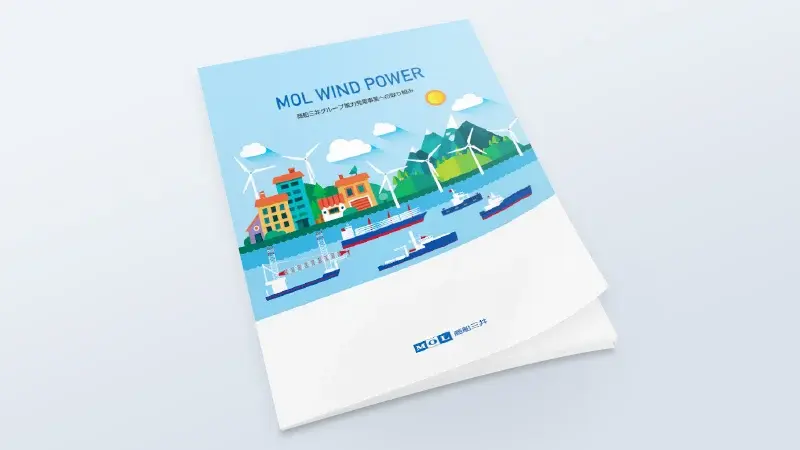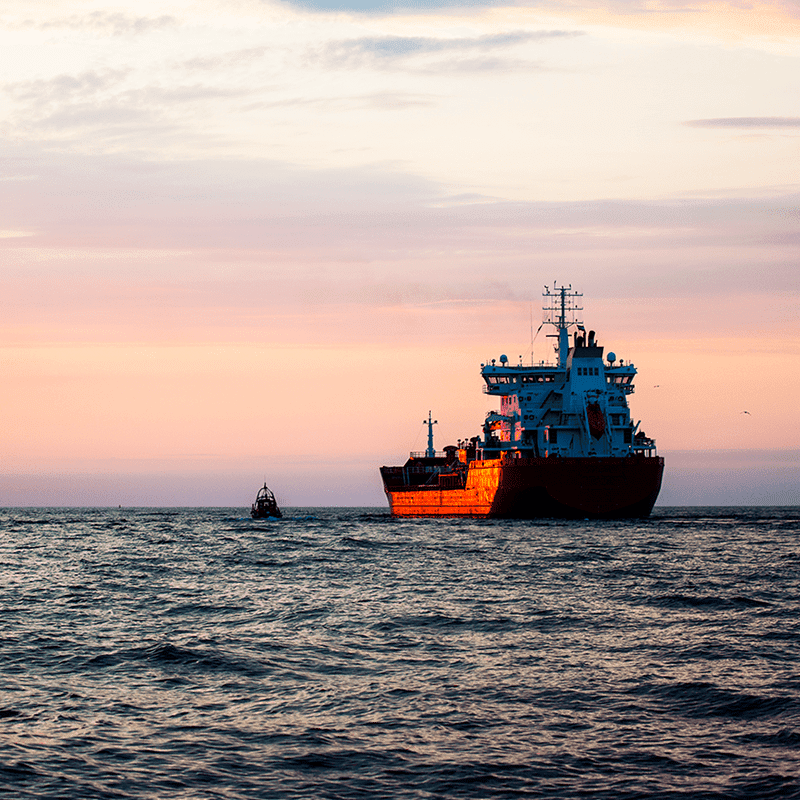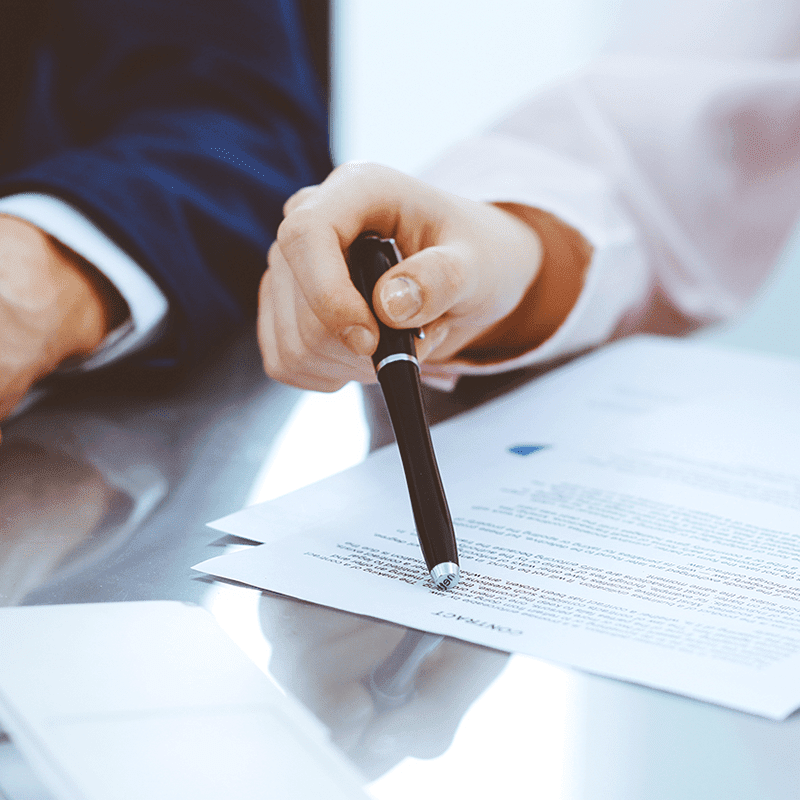BLOG
Offshore Wind Power Now and in the Future - Current Trends from MOL's Perspective
- General Shipping
2025.06.23
Offshore wind power is being introduced around the world as a key method for renewable energy. However, many people may not know how it works or how shipping companies are involved. In this blog, we will review the basics of wind power, introduce the vessels active in offshore wind power projects, and outline the current status of initiatives for offshore wind power around the world.
(This article was written in April 2025)
Key Points
-
Offshore wind power is being adopted globally as a core renewable energy source.
-
There are two types: fixed-bottom and floating; floating is the most suitable for Japan's topography.
-
Various specialized vessels (SEP, CTV, SOV, etc.) are essential for installation and maintenance.
-
China leads globally in deployment; inflation and geopolitical risks are challenges in the West.
-
Mitsui O.S.K. Lines promotes environmental business by offering services across the offshore wind value chain.
Basics of Offshore Wind Power
History of Offshore Wind Power
Offshore wind power is positioned as a relatively new method among various power generation techniques. However, projects have been underway for over 30 years, with its history beginning in 1991 when a Danish power company constructed the world's first offshore wind farm in Vindeby, Denmark. After 2000, as measures against climate change advanced, the introduction of offshore wind accelerated across Europe, and Europe remains an advanced region in wind generated power today. In Japan, research and development progressed after the 2000s. The first offshore wind farm was constructed in Setana Town, Hokkaido in 2004, and the Wind Power Kamisu No. 1 Offshore Wind Farm off the coast of Kashima, Ibaraki, started commercial operation in 2010 as the first commercial project. Currently, the Government of Japan has set an offshore wind power introduction target of 30-45 GW by 2040 and is promoting the introduction and consideration of offshore wind in approximately 30 zones across Japan.

Japanese Offshore Wind Zones as of Oct. 2023, METI(Source:Offshore Wind in Japan Policy Agenda and Prospects)
Types of Offshore Wind Power
There are two types of offshore wind power methods: Fixed Bottom and Floating. In Japan, Floating Offshore Wind is expected to become mainstream in the future.
A. Fixed-bottom
This method involves installing wind turbines on a foundation fixed to the seabed. Generally, fixed-bottom is considered suitable for sea areas with water depths of around 50 meters or less.
B. Floating
Floating structures are mainly classified into four types: Barge type, Tension-Leg Platform (TLP), Semi-submersible, and Spar. The type selected is based on the characteristics and conditions of the installation site. Floating structures are said to be the most suitable for Japan's topography, which has few shallow coastlines and a high risk of natural disasters.
 Main types of offshore wind power facilities and their characteristics (Source: Offshore Wind in Japan Policy Agenda and Prospects)
Main types of offshore wind power facilities and their characteristics (Source: Offshore Wind in Japan Policy Agenda and Prospects)
Vessels Involved in Offshore Wind Power
Offshore wind power requires various types of vessels, not only for transporting equipment but also for dispatching engineers for the installation and maintenance of wind turbine facilities. Next, we will introduce the vessels involved in offshore wind power.
Transportation: Module Carrier
This type of vessel has a flat deck and is capable of directly loading wind turbine components such as blades and floating foundations, handling the transportation of all kinds of large heavy objects.
 Image of a newly built Module Carrier for JFE Engineering (Source: Company Press Release)
Image of a newly built Module Carrier for JFE Engineering (Source: Company Press Release)
Installation: Self-Elevating Platform (SEP) Vessel, Wind Turbine Installation Vessel (WTIV)
These vessels are equipped with legs and a crane that elevate the platform above the sea surface, performing the installation work for offshore wind power facilities. By raising and holding the platform at a height not reached by waves, crane operations can be performed even in choppy sea conditions. In addition to installing offshore wind power facilities, they are also engaged in the maintenance of oil and gas wells.

SEP Vessel "Seajacks Zaratan" (Source: Company Press Release)
Installation: Anchor Handling Tug Supply (AHTS)
Originally, these were work vessels engaged in towing marine structures such as oil rigs and installing mooring anchors and chains. As similar mooring is required for Floating Offshore Wind, they are also active in the offshore wind sector.
Cable Laying: CLV (Cable Laying Vessel)
Subsea cables are essential for transmitting electricity generated by wind turbines to the onshore power grid and for interconnecting offshore wind turbines. Dedicated cable laying vessels are utilized. Within the MOL Group, MOL Maritex Co., Ltd. operates and manages two subsea cable laying vessels equipped with specialized facilities.
Operation and Maintenance (O&M): Service Operation Vessel (SOV), Crew Transfer Vessel (CTV)
SOV:
An offshore support vessel with numerous cabins capable of operating offshore for a certain period, used to dispatch maintenance engineers from the offshore wind farm to multiple wind turbines. To maintain a constant safe distance between the vessel and the offshore wind turbine, it is equipped with a Dynamic Positioning System (DPS). Furthermore, to safely transfer engineers from the vessel to the offshore wind turbine platform, it is equipped with a Motion Compensation function that absorbs hull motion caused by waves. SOVs intended for use in the construction and commissioning of offshore wind farms are distinguished from SOVs deployed for maintenance operations after equipment installation, and are sometimes referred to as CSOV (Construction/Commissioning SOV). CSOVs are designed with a larger crane capacity and accommodate more personnel compared to standard SOVs.
%E3%81%8C%E4%BF%9D%E6%9C%89%E3%80%81%E7%AE%A1%E7%90%86%E3%81%99%E3%82%8B%E3%80%8CTSS%20PIONEER%E3%80%8D-1.jpg?width=555&height=314&name=%E5%8F%B0%E6%B9%BE%20Ta%20Tong%20marine%E3%81%A8%E3%81%AE%E5%90%88%E5%BC%81%E4%BC%9A%E7%A4%BE%E3%81%A7%E3%81%82%E3%82%8B%E5%A4%A7%E4%B8%89%E5%95%86%E8%88%AA%E9%81%8B(Ta%20San%20Shang%20Marine)%E3%81%8C%E4%BF%9D%E6%9C%89%E3%80%81%E7%AE%A1%E7%90%86%E3%81%99%E3%82%8B%E3%80%8CTSS%20PIONEER%E3%80%8D-1.jpg)
Owned and managed by Ta San Shang Marine, a joint venture with Ta Tong marine in Taiwan, "TSS PIONEER" (Source: Company Press Release)

Image of two new CSOVs under construction by Ta San Shang Marine, "TSS Cruiser" and "TSS Challenger" (Source: Company Press Release)
CTV:
A vessel (passenger capacity 12-24 people) that transports maintenance engineers from the base port to the offshore wind turbines. The vessel stabilizes itself by pressing a fender attached to the bow against the offshore wind turbine, allowing engineers to transfer to the turbine.
 Our owned CTV "KAZEHAYA" (Source: Our Company Website)
Our owned CTV "KAZEHAYA" (Source: Our Company Website)
Other photos of the vessels introduced above can also be viewed here:
Circumstances Surrounding Offshore Wind Power
Recently, prolonged inflation, geopolitical risks such as the war in Ukraine and the Red Sea crisis, and trade wars are significantly impacting the business environment. This section introduces global initiatives for offshore wind power and the impact of these factors on it.
Global Introduction Trends
According to RenewableUK, as of 2024, global installed offshore wind capacity reached 80.9 GW (approximately half of which is in China), accounting for 0.4% of the world's energy supply. According to Clarksons Offshore Wind: 2024 Market Review, 13,943 turbines are currently operating in 333 offshore wind farms across 20 countries worldwide (6,674 in China). Global offshore wind capacity is projected to expand by 28% year-on-year in 2025, reaching nearly 100 GW in total capacity.

Offshore Wind Power Generation Capacity by Country (Source: RenewableUK)
On the other hand, global new investment in offshore wind power in 2024 decreased by 35% year-on-year due to inflation, rising costs, and supply chain disruptions. Clarksons predicts that $79 billion will be invested globally in 2025 (with $36 billion coming from China). However, in the United States, many projects have experienced prolonged delays and cost increases, leading to cancellations. Additionally, headwinds against offshore wind power projects in the U.S. have intensified, such as a presidential order from the Trump administration suspending the leasing of federal lands for offshore wind power businesses.
.jpg?width=693&height=586&name=Investment%20In%20Global%20Offshore%20Wind%20By%20FID%20Year%20(2).jpg)
.jpg?width=567&height=499&name=Major%20offshore%20categories%20(2).jpg) Trends in Offshore Wind Power Final Investment Decisions (FID) (Upper graph), (Source: Clarksons)
Trends in Offshore Wind Power Final Investment Decisions (FID) (Upper graph), (Source: Clarksons)
Trends in Offshore Wind Power Costs (Lower graph) (Source: S&P Global)
Japan
The government of Japan has set offshore wind introduction targets (on a project formation basis) of 10 GW by 2030 (5.7 GW on an operational basis) and 30-45 GW by 2040. Since 2021, joint public-private initiatives have been underway, including public offerings for project formation and operator selection, and amendments to laws to extend the scope of offshore wind power facility installation from territorial waters to the EEZ. However, projects awarded in the 2021 public offering are currently facing difficulties due to the recent global inflation and the depreciation of the yen, among other challenges. Nevertheless, the government positions offshore wind power as "central in making renewable energy a primary power source", and expectations for the offshore wind business remain very positive.
Europe and the United States
Under the Biden administration, the United States promoted projects towards an ambitious goal of 30 GW of offshore wind capacity by 2030. However, due to inflation, rising material costs, withdrawal of investors, and the counter-winds from the Trump administration, many projects have been forced to withdraw or be re-evaluated. Similarly, in Europe, inflation, rising interest rates, and supply chain disruptions are exerting downward pressures on projects. Furthermore, Sweden decided to cancel 13 offshore wind projects in the Baltic Sea, geographically close to the Russian exclave of Kaliningrad. The reason for this is the potential for power generation facilities to adversely affect communications such as air traffic control radar and surveillance radar. This illustrates cases where geopolitical risks serve as headwinds for projects. However, there is also good news! In the UK, wind power surpassed gas power for the first time in 2024 to become the largest power source domestically. Projects are also steadily progressing in various European regions such as Belgium, Germany, France, the Netherlands, and Poland. In addition, zero-subsidy bids are being seen, indicating that offshore wind power maintains competitiveness compared to other power sources due to the results of investment and technological innovation.
China
According to RenewableUK, China's installed offshore wind capacity is approximately 41 GW, accounting for half of the world's total. Although subsidies for offshore wind power in China were abolished in 2022, the installed capacity has steadily increased since then. China also has a significant presence in wind power (including onshore) OEM. In 2023, four Chinese wind turbine OEM companies were ranked among the world's top 5, and the top 5 companies, including Vestas, accounted for 54% of the global wind market. In 2024, the world's largest capacity floating offshore wind platform, "Mingyang Tiancheng", commenced operation in Guangdong province. It is the first in the world to install two 8.3 MW wind turbines on a single floating base, with a total capacity of 16.6 MW.
 Wind Power OEM Rankings (Wood Mackenzie)
Wind Power OEM Rankings (Wood Mackenzie)
Floating Offshore Wind Power Platform "Mingyang Tiancheng" (Source: Science portal china)
This article introduced the history of offshore wind power, power generation methods, vessels active in offshore wind power, and the current status of global initiatives. While we covered offshore wind in a blog in 2021, the environment surrounding offshore wind power is constantly changing. Currently, projects are facing difficulties due to cost increases from inflation and geopolitical risk factors such as the sudden shift in the U.S. environmental policy. However, expectations for offshore wind power as a key factor in decarbonization and ultimately as the endpoint of carbon neutrality will continue to remain high.
The MOL Group will continue to actively promote and foster “environment and emission free businesses,” including the provision of a wide range of services in the value chain of the offshore wind power energy business, in an effort to reduce the environmental impact of energy generation.
Please see below for an overview of our offshore wind power energy business initiatives.
.webp)
OFFSHORE WIND POWER ENERGY BUSINESS
Based on our extensive knowledge of the sea, ships, and floating structures cultivated over many years as a comprehensive marine transportation company, We will contribute to the entire value chain of offshore wind power by leveraging the collective strengths of the MOL Group.

Download Materials/
MOL Wind Power Project
The MOL Group will respond to a wide range of customer concerns related to wind power generation, from Feasibility Study to Engineering, logistics, construction, and O & M. A document outlining this service is available for download.

Writer:Akihiro
I majored in environmental economics at the university and graduate school. After graduating, I joined Mitsui O.S.K. Lines and was assigned to the Corporate Marketing Divition. I am responsible for researching macroeconomic information and handling cross-departmental marketing activities across the entire company. On weekends, I enjoy going fishing and watching baseball games to relax.
Recommended Articles
2022.07.05
- General Shipping
2021.04.13
- Energy
2024.02.06
- General Shipping
- Market Analysis
2023.12.19
- General Shipping
2021.08.07
- Eco Friendly
Latest Articles
2025.08.08
- General Shipping
2025.08.04
- Eco Friendly
- General Shipping








